LAHORE FORT
Standing since the 16th century, the Lahore Fort is one of the most iconic landmarks in Pakistan and is a witness to the city’s long and storied past. This massive Fort is a significant tourist attraction in the city, and for a good reason – it’s absolutely beautiful! Visitors can explore its many chambers, monuments, and courtyards, each with its unique history and exciting stories you’ll love learning. So if you’re looking for an enlightening day out, put Lahore Fort on your travel plan!
Lahore Fort Attractions, Tickets, Timings & Location
The Lahore Fort, also known as Shahi Qila, is located at the northern end of the historic walled city of Lahore. It was Built on the bank of River Ravi in the Mughal era and had a large complex that covered an area of 20 hectares (50 acres). The Fort has several attractions, including the Sheesh Mahal, Pari Mahal, Moti Masjid, Naulakha Pavilion, Akbari Gate, Alamgiri Gate, etc.
The Lahore Fort is open to the public daily from 9:00 am to 5:00 pm, and tickets are purchased at the main entrance. The entrance ticket is PKR 500 for foreigners and PKR 50 for Pakistani nationals. Guided tours are also available for an additional fee.
Interesting Facts about Shahi Qila
Today, the Shahi Qila Lahore is a UNESCO World Heritage Site and a popular tourist destination in Pakistan. There are many interesting facts about it. One of the most interesting facts about the Lahore Fort is its several secret tunnels. It has a 400-year-old secret underground tunnel of about 625 ft. discovered recently during restoration work and is said to lead all the Red Fort in Delhi, India. It is thought that Emperor Shah Jahan used this tunnel to escape capture by his son Aurangzeb.
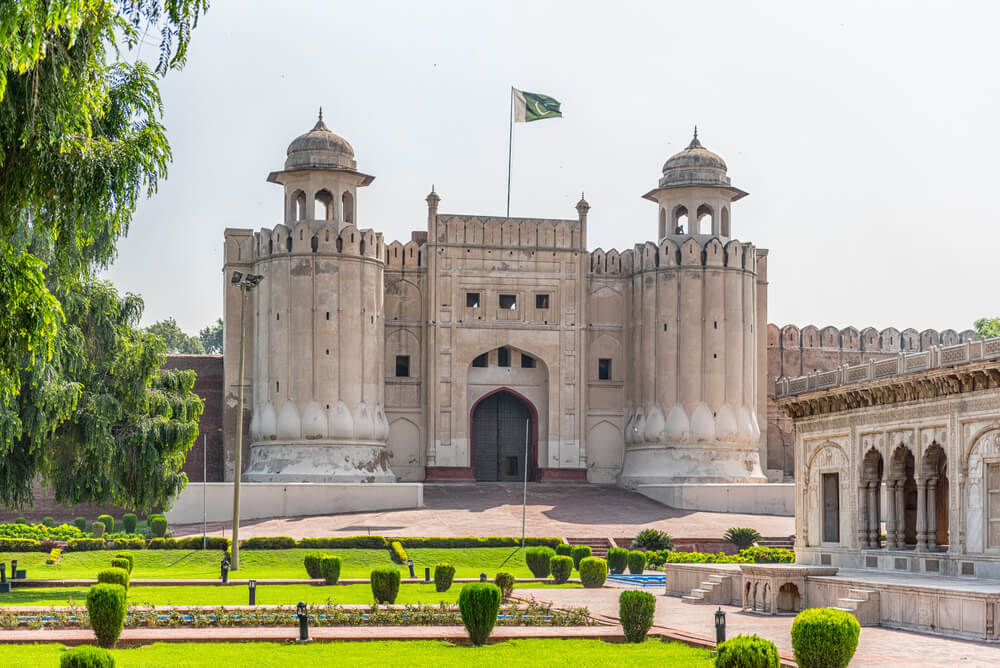
Emperor built Fifty-eight elephant steps in the Fort to accommodate royals riding on elephants. It has an underneath Royal bath of the Akbari era, which also has a secret tunnel. Royal Fort also has an underneath Summer Palace of Shah Jahan with Beautiful architecture and paintings and magical walls by which you can hear one person’s conversation on the opposite corner of the wall. All attractions have their facts so keep reading to know all about them.
History of Lahore Fort
Many cultures and histories of various religions are attached to this Fort. The history of Lahore Fort is long and varied, dating back to the 11th century. The original Fort was built in the 11th century by Mahmud Ghaznavi but was later expanded and renovated by several Muslim rulers. It was first well built by Mughal emperor Akbar the Great in 1566 CE.
The Fort had seen many changes over the centuries, most notably during the Mughal period, which transformed the Fort into a grand palace complex. It was also the scene of several battles, both within and without. The city grew around the Fort, making it almost impossible to defend itself from outsiders in later periods of its existence. It had extensive underground passages, but these were never put to use. Shahi fort is surrounded by a high brick wall and is a fascinating example of Islamic Architecture, and its rich history is sure to captivate any visitor.
The Architecture of Lahore Fort
The Fort is built primarily of red sandstone, with marble and tile used for decorative details. The earliest buildings were constructed during the reign of Akbar the Great, and Aurangzeb made the most recent additions. Over the centuries, the Fort has been expanded and altered by subsequent rulers, resulting in a complex and fascinating architecture that blends Islamic, Persian, and Hindu influences.
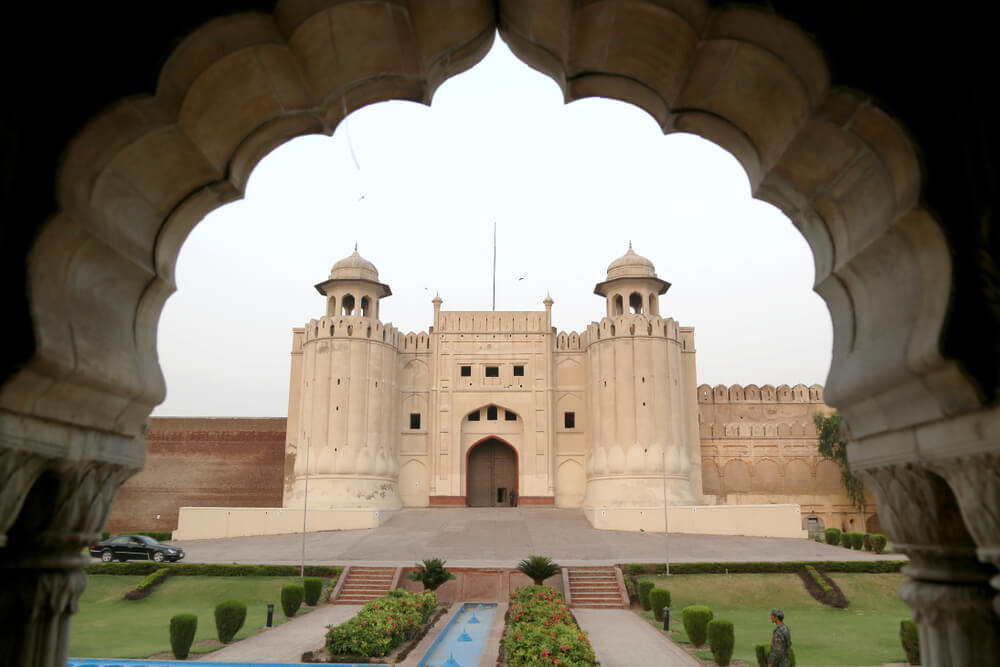
The architecture of Lahore Fort is notable for its symmetry and balance, as well as its use of light and shadow to create a sense of depth. The Fort consists of several palaces, mosques, and gardens, all connected by a system of covered walkways. The most distinctive feature of the Fort is its massive gateways, which are adorned with intricate calligraphy and carvings. Lahore fort is one of the most beautiful Forts in Pakistan.
Attractions Offered by Lahore Fort for Visitors
Here are some most popular tourist attractions in Shahi Qila Lahore out of 21 monuments.
Naulakha Pavilion
The pavilion was built in 1633 by Emperor Shah Jahan as a summer retreat. The name Naulakha comes from the Hindi word for “nine lakhs,” which was the cost of the pavilion at that time.
Picture Wall
The Lahore Fort is a UNESCO World Heritage Site because the beautiful mosaic mural wall seen on the walls as you enter the Fort is truly a sight to behold. It’s a wonder to see how beautifully the wall is adorned with glazed tiles, mosaics, and paintings that portray scenes from different stages of the king’s life. If you’re ever in Lahore, visit the Picture Wall and enjoy its beauty!
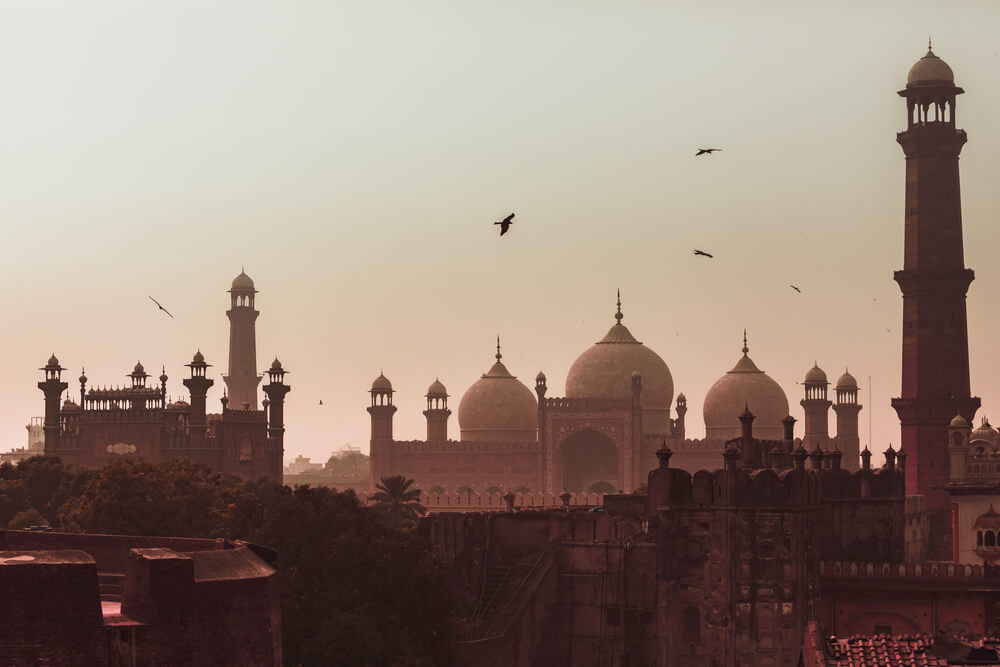
Khawab Gah (Sleeping Chamber of Shah Jahan)
King Shah Jahan’s sleeping chamber was an impressive room for his slumber decorated with mirrors and ornaments, and candlelight would dance off these shiny surfaces. At the same time, he slept peacefully inside them at night (a sight to behold!). The cooling fountains outside could avoid the heat during summertime nights but were unfortunately ruined by the British.
Sheesh Mahal
The spectacular Sheesh Mahal is within the Fort’s walls, a palace adorned with thousands of tiny mirror tiles. The glittering mirrors reflect the light in a thousand different directions, creating a stunning effect that is said to have enchanted even the most hardened of hearts. A person generally speaking at one end of the Mahal can be heard clearly at the other, even if the Mahal is empty. Emperor Shah Jahan built the Sheesh Mahal in the mid-17th century for her beloved wife, Mumtaz.
Moti Masjid
Moti Masjid, meaning “Pearl Mosque,” is located within the Lahore Fort and was built by Mughal Emperor Jahangir in 1631–32 and extended by Shah Jahan. It is a small, three-domed structure made of white marble, with a three-bay deep prayer hall lined with white marble. The mosque has a central courtyard with an ablution basin in the middle. It provides insight into the religious and cultural values of the Mughal Empire. Despite its name, the Pearl Mosque is not adorned with any pearls or jewels.
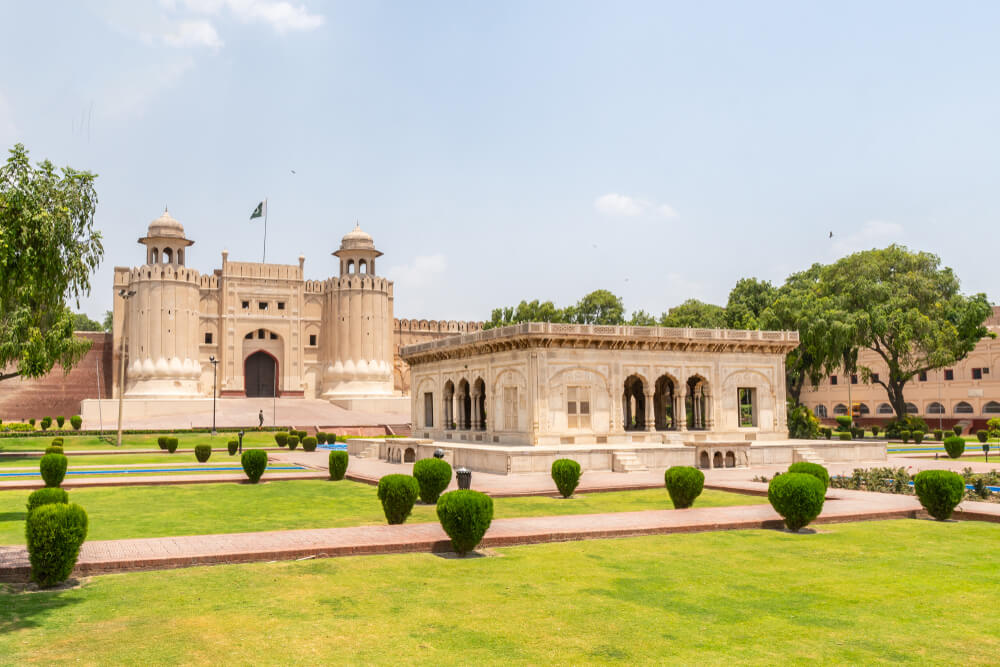
Akbari Gate
The Akbari Gate is one of the four main gates of the Lahore Fort, built during the reign of Emperor Akbar in the 16th century. The gate gets its name from Akbar, who ordered its construction. It is located on the eastern side of the Fort and was used as the main entrance for visitors and dignitaries. The Akbari Gate is decorated with intricate carvings and styles.
Alamgiri Gate
The Alamgiri Gate is the main entrance to the Lahore Fort, built by Emperor Aurangzeb in 1674, located on the west end of the Fort, which is the side that faces the BadShahi Mosque. Lotus petal-shaped design is carved on the gate, which is also featured in the currency of Pakistan.
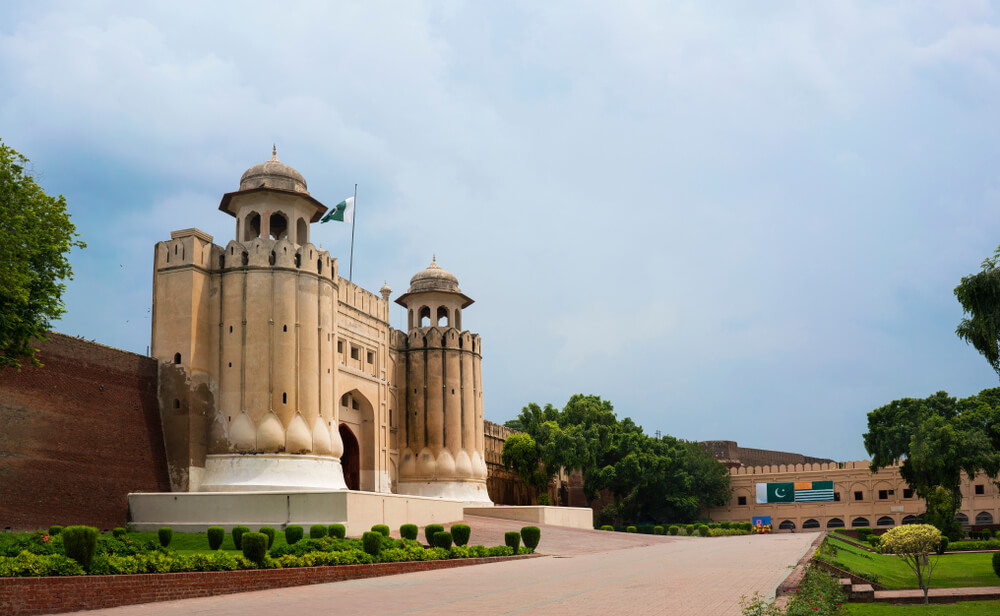
Naag Temple
Naag temple is an important part of Sikh history and culture built by daughter in law of Ranjit Singh. It has a watermelon-shaped dome, and interior walls are covered with fresco paintings. But it is a no-go area for the public to prevent deterioration.
Diwan-e-Khas (Hall of Private Audience)
The Diwan-i-Khas were an important part of the Mughal court. This hall was where the Emperor would take care of matters of state, meet with courtiers and state guests, and take a session before the audience.
Diwan-e-Aam (Hall of Public Audience)
It was built by Shah Jahan, located in the south of the Quadrangle of Jahangir. It is a 40-pillar hall for the common audience where the Emperor listened to the matters of the ordinary people. It was almost destroyed in a battle by Sikhs.
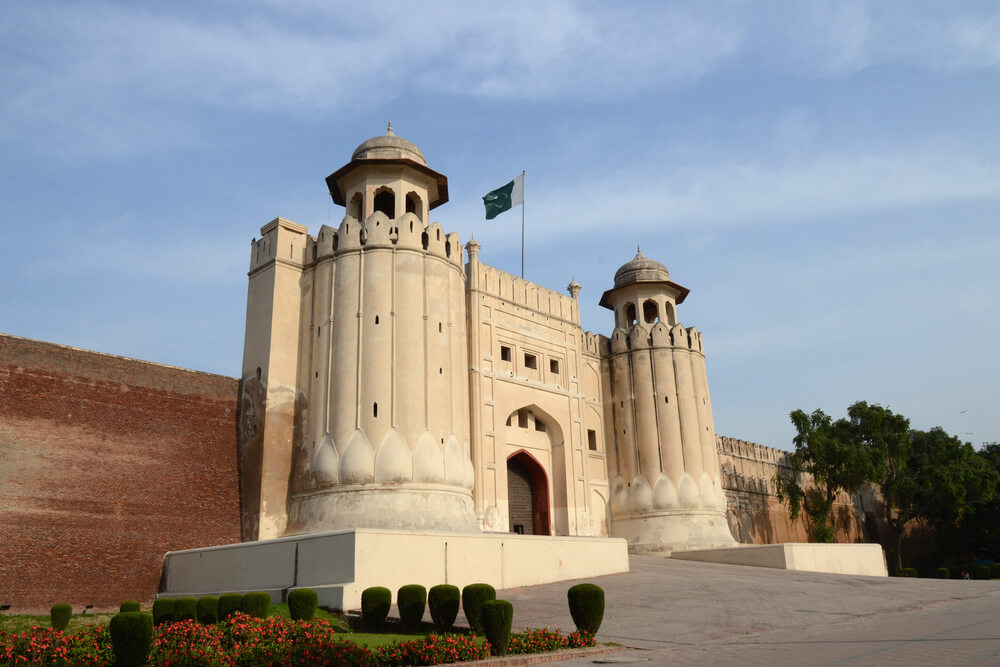
Hathi Paer (staircase for elephants)
Large and wide stairs are located in front of the summer palace. The beautiful steps are significant for providing easy access to people riding on elephants. The stairs are wide and deep, which empowers guests to walk at ease to the palaces on top of the stairs.
Summer Palace
Summer Palace is built beneath sheesh Mehal, a labyrinth of chambers used in summer to avoid heat. It is also known as the Pari Mahal. There are many waterfalls to keep it cool, and its floor has two layers; one will push the water of the river Ravi and keep the palace cool. The architecture of Summer Palace is just amazing.
Paien Bagh
The garden features sweet-smelling flowers bloom in all seasons and cypress trees and fruit trees. Paved paths add to the garden’s charm, and in the center of the garden is a spacious platform with a water basin in the middle. On either side of the platform are two squares, each divided into four small grass plots. It was built in the north of the Royal bath for the Royal Ladies.
Lahore Fort Ticket Price
The entry ticket to Shahi fort Pakistan is PKR 500 for foreigners and PKR 50 for Pakistani nationals. Guided tours are also available for an additional fee.
Lahore Fort Timings
Shahi fort opens daily from 9 am to 5 pm. You can visit it at that time, but visitors are advised to wear comfortable shoes as much walking is involved.
Location & Contact Info
Shahi Qila Fort is located in the north of the historic walled city of Lahore. You can also contact on (042) 99204196 for any information.
Frequently Asked Question
Who built the Lahore fort?
The Fort was built in the 16th century by the Mughal Emperor Akbar and served as the Mughal rulers’ primary residence until the 18th century. It is also said that the mud-brick Fort was built in the Ghaznavi era but well-built with bricks in Akbar’s period.
When was the Lahore fort built?
It was well-built in 1566 CE.
When did the construction of the Lahore fort completed?
It was completed in 1605 but later expanded and renovated by several Muslim and Sikhs rulers.
Which Emperor made the Lahore fort?
It was made by emperor Akbar the Great.
What is Lahore fort famous for?
It is famous for its 21 monuments and several secret tunnels. Each monument has its unique facts and interesting characteristics which captivate the visitors.
How long is the Lahore fort area?
The area covered by the Royal Fort is 50 acres (20 hectares).
How many forts are in Lahore?
There is no other fort in Lahore except Shahi Qila.
How many gates are in Lahore fort?
Once Lahore fort Pakistan has 13 gates until 1857. Many of them are destroyed by the British, and only a few are standing today as the original.
Conclusion
Lahore fort Pakistan is a historical and beautiful place with many secrets. See this true architecture marvel (and don’t forget to check out the underground chambers!). If you are looking for a unique cultural experience, then it is a worthwhile place to go. You will see stunning architecture and a grand old city view from up here. Make sure to bring a camera and guide to better understand and learn about this fascinating part of Pakistan’s history. It’s easy to get lost in the stories the buildings tell you.
